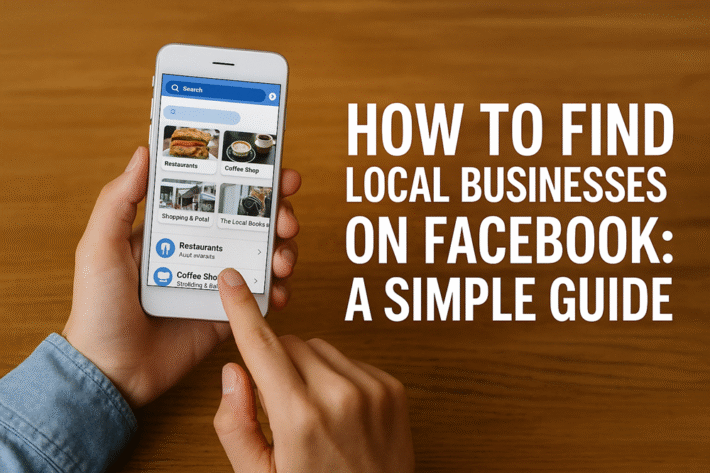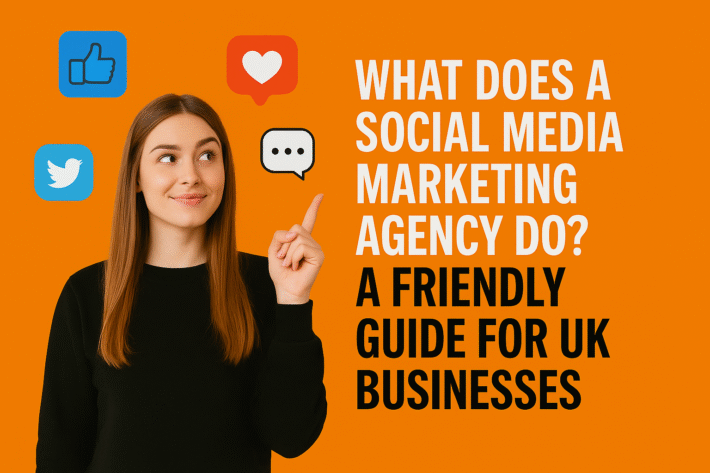Why Every Local Business Needs a Social Media Presence in 2025


The way people shop and discover businesses has fundamentally changed. Today, 4.9 billion people spend over 2.5 hours daily on social platforms (DataReportal 2024), and 83% find local businesses through social media—not Google or word-of-mouth (Meta 2024).
This isn’t just a trend—it’s the new commerce reality. For local businesses, social media has shifted from “helpful” to “business-critical” because:
✅ Multiplies visibility where customers actually spend time
✅ Builds trust through authentic engagement
✅ Drives sales more cost-effectively than traditional ads
The stakes are clear: 90% of consumers now expect local businesses to have social profiles (Sprout Social 2024), and they’re voting with their wallets.
In this article, we’ll break down why an active social presence is no longer optional—it’s the key to growth, customer loyalty, and survival in 2025’s fast-changing market.
1-The Social-First Shopping Shift
Today, people spend more time than ever on social media—scrolling, shopping, and interacting with brands.
Gen Z alone spends 4.1 hours daily on these platforms (eMarketer 2024), turning them into virtual marketplaces where customers discover products, read reviews, and make purchases.
In fact, Instagram now drives 2x more discovery than Google for local services (Yelp 2024), proving social media has dethroned traditional search.
For local businesses, this shift means one thing: if you’re not active where your customers are, you’re invisible.
To stay relevant, businesses must maintain a strong, strategic social presence—posting engaging content, running targeted ads, and interacting with followers.
By meeting customers where they already spend their time, local shops can boost visibility, build trust, and drive sales in an increasingly digital world.
2- Cost-Effective Marketing for Limited Budgets
For small businesses with tight budgets, social media is a proven game-changer. Unlike expensive TV ads, billboards, or print campaigns, platforms like Facebook and Instagram deliver 5x higher ROI than traditional media (Forrester 2024). Even better? Micro-influencer collaborations cost 60% less than radio ads (Influencer Marketing Hub), making premium exposure affordable.
The secret? Low-cost, high-impact strategies that work:
- Organic reach through engaging posts, hashtags, and shares (sometimes even going viral)
- Hyper-targeted ads that reach only the right local customers—zero wasted spending
- Authentic partnerships with nano/micro-influencers who drive trust at a fraction of traditional ad costs
Real-world proof: Coffee shops grow with Instagram Reels, boutiques explode via Facebook promotions, and food trucks book out through TikTok trends.
With the right social strategy, you can outmanoeuvre bigger competitors—without their budget.
3-Building Trust, Credibility, and Brand Loyalty
Today’s customers expect businesses to be active online—a strong social media presence is the new norm.
Your profiles act as digital storefronts, where authenticity and quick responses build trust.
Engaging posts, prompt replies to messages, and positive customer reviews all work together to prove your reliability.
By sharing behind-the-scenes content, responding to comments, and showcasing happy customers, you create a genuine connection.
Over time, this fosters a loyal community around your brand. Local customers who feel heard and valued online are more likely to choose—and stick with—your business over competitors. Social media isn’t just marketing; it’s relationship-building.
4-Direct Engagement and Real-Time Customer Interaction
Social media transforms marketing from a monologue into a conversation. Unlike traditional ads that just broadcast messages, platforms like Instagram and Facebook let you actually talk with customers—answering questions, addressing concerns, and thanking them for support.
Quick replies to comments and DMs make customers feel valued, while interactive features like polls, live Q&As, and stories keep them engaged.
Need to fix an issue or manage feedback? Social media allows instant customer service, helping you resolve problems before they escalate.
By being responsive and approachable online, you don’t just sell—you build lasting connections that turn followers into loyal fans.
5-Expanding Reach Beyond Local Boundaries
Social media breaks down geographic barriers, letting local businesses attract customers far beyond their neighbourhood.
A single shareable post or viral reel can introduce your brand to thousands—even millions—of potential new clients.
Even if just 1% of viewers engage, that’s a significant boost in exposure.
For example, a bakery’s trending TikTok video or a boutique’s Instagram giveaway can draw orders from across the country.
By leveraging hashtags, collaborations, and targeted content, businesses can scale their growth without expensive expansion.
Social media doesn’t just keep you local—it turns your small shop into a brand with limitless reach.
6-Adapting to Social Media Trends and Algorithms in 2025
Social media platforms now reward meaningful interactions—likes alone won’t cut it.
Algorithms prioritize content that sparks conversations, gets shared, or is saved for later.
For small businesses, this means creating quality posts that connect emotionally, like behind-the-scenes stories or customer spotlights.
Ask questions, run polls, and reply to comments to boost engagement.
Consistency matters, but so does adapting—short videos (Reels, TikTok) and live streams now dominate.
By mastering these trends, local businesses can outshine competitors and stay visible. In 2025, success isn’t just about posting; it’s about creating content worth talking about.
7-Supporting SEO and Overall Online Visibility
A strong social media presence doesn’t just engage followers—it boosts your entire online visibility.
Search engines like Google factor in active social profiles when ranking local businesses, helping you appear higher in search results.
By sharing blog links, promotions, and location-based posts, you drive traffic to your website and even foot traffic to your store.
Social signals—likes, shares, and comments—also reinforce your credibility with search algorithms.
When combined with local SEO strategies (like Google My Business), social media creates a powerful digital footprint.
The result? More discoverability, more clicks, and more customers finding you through both search and social platforms.
8-Social Media as a 24/7 Open Storefront
While your physical store has opening hours, your social media never closes. It’s always working—showcasing products, answering questions, and attracting customers, day or night.
A consistent, active presence keeps your brand visible in feeds and search results, turning casual scrollers into buyers.
Post regularly, highlight promotions, and engage with comments to create endless opportunities for sales.
In today’s digital world, your social profiles are your always-open storefront—ready to welcome customers anytime, anywhere.
9-Measuring Success and Optimizing Strategies
Social media success isn’t guesswork—it’s measurable. Platforms provide powerful analytics tools to track what works: engagement rates, audience reach, and conversion metrics.
Smart businesses use this data to refine their approach, doubling down on high-performing content and adjusting underperforming ads in real-time.
By continuously analysing metrics and adapting strategies, you ensure every post and campaign delivers maximum impact.
This agile, data-driven approach keeps your social media presence effective, efficient, and aligned with your business goals.
FAQs:
Q.1 Which Social Media Platform Is Best For Local Businesses?
In 2025, Instagram, Facebook, and TikTok dominate local reach. Instagram drives 2x more discovery than Google for local services (Yelp 2024), while Facebook’s targeted ads offer unbeatable ROI.
TikTok excels for viral visibility—especially with Gen Z. Choose based on your audience:
- Retail/food? Instagram Reels + Facebook Groups.
- Services (e.g., salons, contractors)? Facebook + local hashtags.
- Trendy/products? TikTok challenges + influencer collabs.
Q. 2 How often should I post to grow my local business?
Quality beats quantity, but consistency matters:
- Instagram/Facebook: 3–5x/week (mix of stories, reels, posts).
- TikTok: 4–7x/week (short videos trend faster).
- Twitter/X: 1–2x/day for real-time engagement.
Pro Tip: Use analytics to track when your audience is most active.
Q.3 Can social media really replace traditional advertising?
For local businesses, yes—if done strategically. Social ads cost 60% less than radio/TV (Influencer Marketing Hub) and deliver 5x higher ROI (Forrester 2024).
Q.4 How do I handle negative comments or reviews online?
Respond fast and professionally—88% of consumers trust businesses that address complaints openly (Sprout Social).
Example: “Thanks for your feedback, [Name]! We’re sorry to hear this. Please DM us so we can make it right.”
Delete only spam/hate speech; constructive criticism builds credibility.
Q.5 What’s the easiest way to measure social media success?
Track these free metrics in-platform (no tools needed):
- Engagement rate: Likes/comments per follower.
- Click-throughs: Link clicks to your website.
- Follower growth: Steady increase = content works.
- Sales/conversions: Use promo codes like “INSTA10” to track social-driven purchases.
Final Thoughts!
In 2025, social media isn’t optional—it’s essential for local businesses to compete and grow. It offers a cost-effective way to engage customers, build trust, and expand reach beyond your neighborhood.
Whether through viral content, targeted ads, or real-time interactions, social media delivers unmatched marketing power. Don’t get left behind—start crafting your social media strategy today.
Stay active, stay relevant, and watch your business thrive in the digital era. The future of local commerce is social—make sure you’re part of it.



